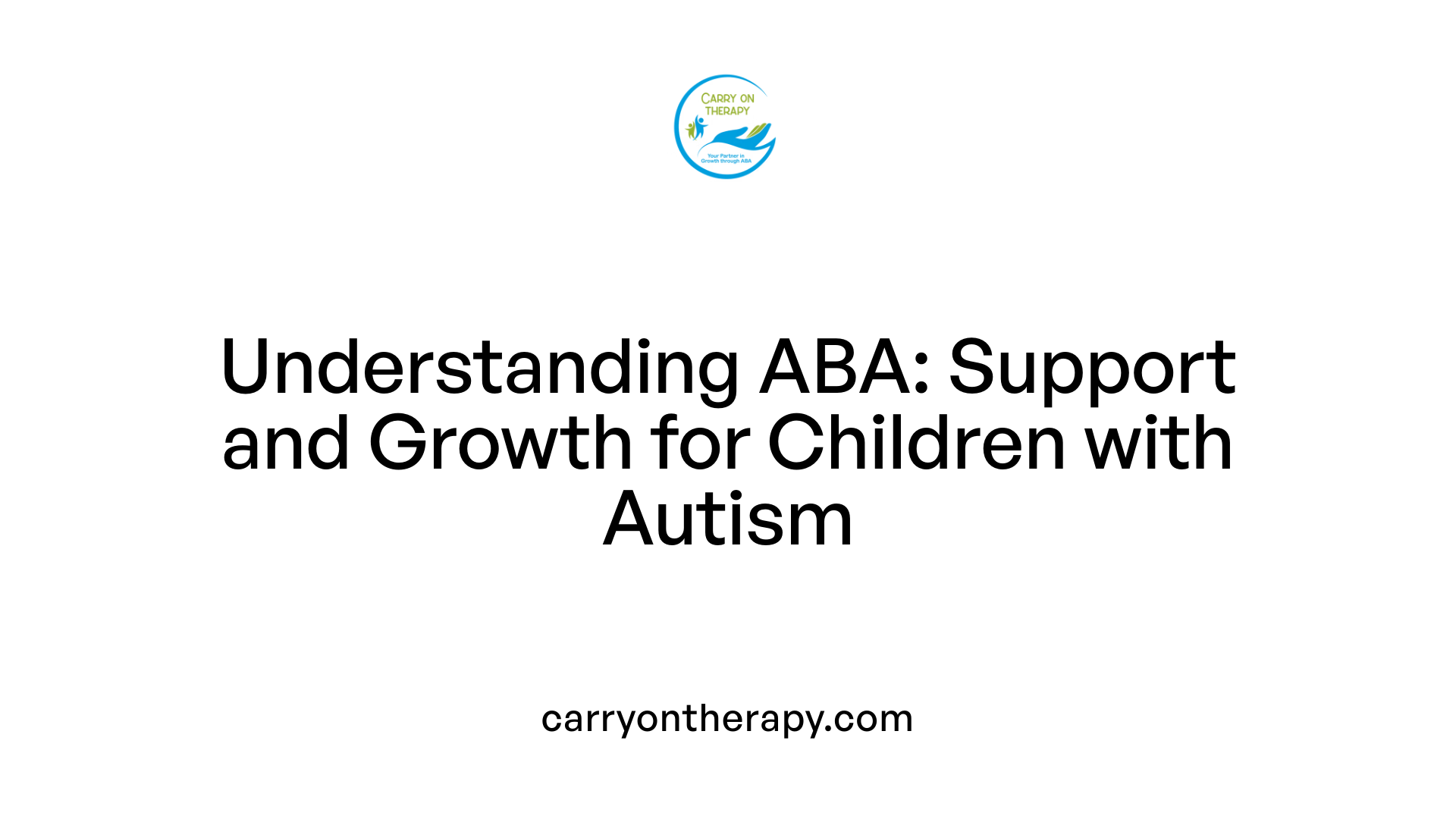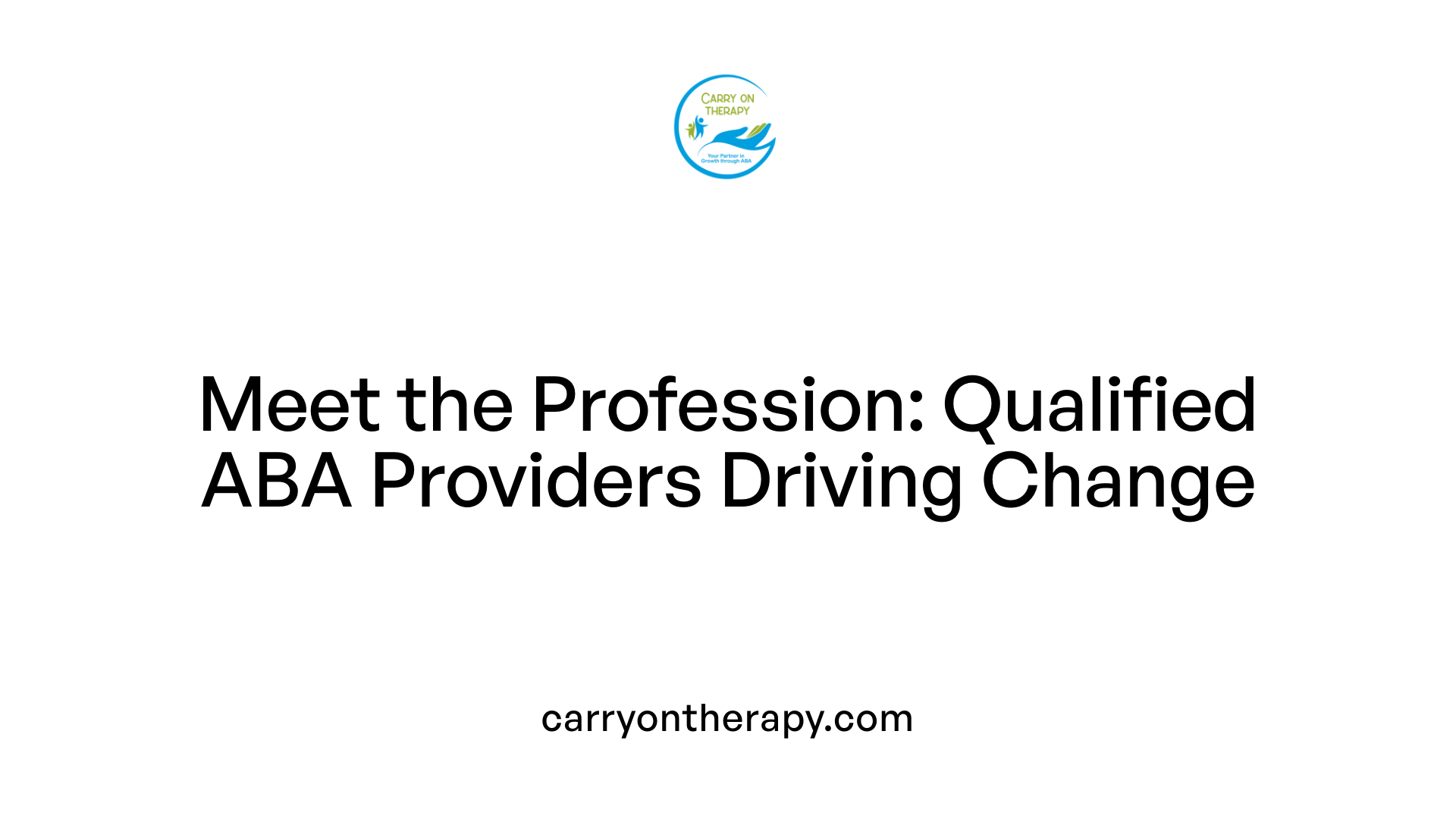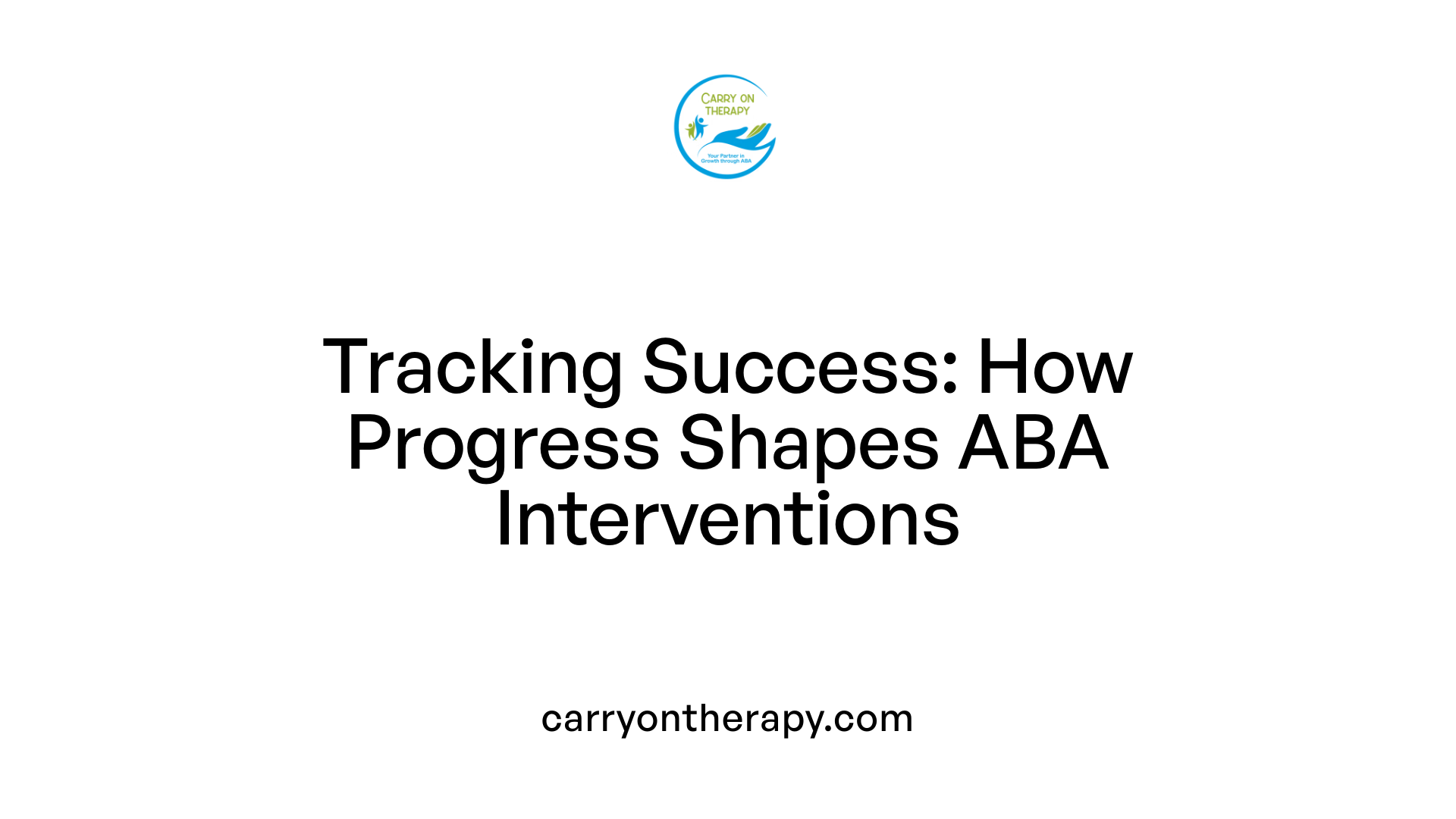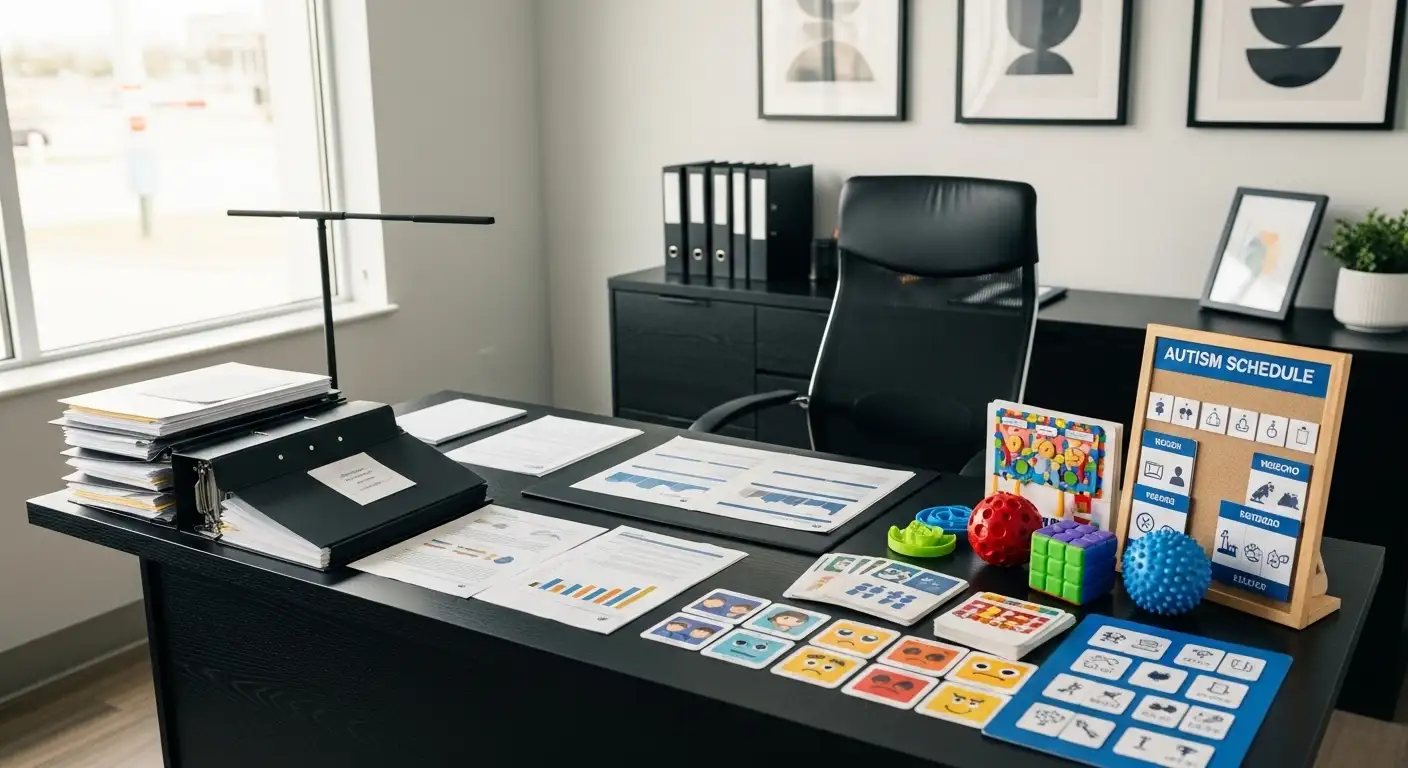Early Childhood Education for Autism
Unlocking Potential: The Transformative Power of Early Behavioral Intervention

Understanding Early Childhood Education for Autism
Early childhood education for children with autism spectrum disorder (ASD) presents unique opportunities to develop essential skills that foster independence, communication, and social interaction. Central to this approach is evidence-based behavioral therapy, particularly Applied Behavior Analysis (ABA), which has reshaped how educators and therapists support young children with autism. This article explores the role of ABA therapy and related early interventions in providing tailored educational pathways that empower children to thrive in their environments and daily lives.
What is ABA Therapy and Its Role in Autism Support?

What is ABA Therapy and How is it Used to Support Individuals with Autism?
ABA therapy, or Applied Behavior Analysis, is a scientifically validated treatment that uses the science of learning and behavior to support individuals with autism spectrum disorder (ASD). It relies on understanding how environmental factors influence behavior and applies techniques such as positive reinforcement to encourage desired behaviors while reducing challenging ones.
At its core, ABA involves the A-B-C model—antecedent, behavior, and consequence—to identify what triggers behaviors and how to modify them effectively. Therapists break down skills into small, manageable steps, use prompts, and then gradually fade those prompts to promote independence.
How Are ABA Programs Individualized?
ABA therapy is highly individualized. Certified professionals—like Board Certified Behavior Analysts (BCBAs)—develop customized programs based on the child’s unique strengths, interests, and needs. This means therapy sessions can vary widely, incorporating direct instruction, natural environment training, and play-based methods like the Early Start Denver Model.
Why is Early and Intensive ABA Intervention Important?
Early and intensive ABA treatment—ideally started before age three—leverages neuroplasticity, the brain’s ability to change and adapt. Research demonstrates that intensive, early intervention can improve communication, socialization, expressive language, and intellectual functioning. It also helps children develop important life skills such as dressing, grooming, and emotional regulation.
What Role Do Families and Caregivers Play in ABA Therapy?
Family involvement is crucial in ABA therapy’s success. Parents and caregivers receive training to implement behavioral techniques consistently across home, school, and community settings. This collaboration helps generalize skills, reduces caregiver stress, and creates a supportive environment for the child’s ongoing development.
Overall, ABA therapy provides a structured, evidence-based framework designed to enhance abilities and independence for children with autism, fostering better communication, social interaction, and daily living skills.
Who Provides ABA Therapy and Their Expertise

Who typically provides ABA therapy and what qualifications do they have?
ABA therapy is delivered primarily by trained professionals with specialized education and certification in behavior analysis. The leading providers are Board Certified Behavior Analysts (BCBAs), individuals who have completed graduate-level coursework in applied behavior analysis or related fields and obtained certification from the Behavior Analyst Certification Board. To achieve BCBA status, candidates undergo extensive supervised fieldwork—usually accumulating between 1,000 and 2,000 hours—and pass a rigorous certification exam.
Role of Board Certified Behavior Analysts (BCBAs)
BCBAs are responsible for designing individualized ABA programs tailored to each child's strengths, needs, and interests. They conduct comprehensive assessments, develop treatment plans, supervise therapy implementation, and monitor progress continuously. Their expertise ensures interventions are ethical, effective, and data-driven.
Work of Registered Behavior Technicians (RBTs) and other professionals
Registered Behavior Technicians (RBTs) play a crucial role by providing direct one-on-one therapy sessions under BCBA supervision. RBTs have completed specialized ABA training and demonstrate competency through certification exams. They implement behavioral strategies such as positive reinforcement, prompting, and data collection while working closely with children and families. Other supporting professionals, such as speech therapists or occupational therapists, may collaborate to complement ABA goals.
Certification and training requirements
ABA practitioners follow strict credentialing paths to ensure quality treatment delivery. BCBAs maintain certification through ongoing continuing education and adherence to professional ethical standards. RBTs must renew certification annually by completing required training hours and performance assessments. These certifications guarantee that ABA therapy is delivered by competent, knowledgeable personnel.
Ongoing education and supervision
ABA therapy involves continual professional development and supervision to stay current with advances in research and best practices. BCBAs provide regular oversight to RBTs, using consistent data review and feedback to adapt interventions. This supervision ensures that therapy evolves with the child's progress and changing needs, maintaining high standards of care and effectiveness.
Core Goals and Techniques in Behavioral Analysis Therapy

What are the main goals of behavioral analysis therapy in autism treatment?
Behavioral analysis therapy, especially Applied Behavior Analysis (ABA), primarily aims to increase helpful behaviors and decrease problematic ones in children with autism.
Increasing helpful behaviors
ABA focuses on promoting useful skills including:
- Language and communication
- Social interaction and peer engagement
- Self-care routines like dressing and hygiene
- Academic abilities and attention
- Emotional regulation and coping mechanisms
Reducing problematic behaviors
Problematic or interfering behaviors that reduce learning or socialization are systematically reduced by identifying triggers and teaching alternative responses.
Use of positive reinforcement and prompting
Central to ABA is positive reinforcement, where desired behaviors are rewarded with meaningful incentives to encourage repetition. ABA utilizes prompting strategies to guide children through small, manageable steps, with prompts gradually faded to foster independence.
Individualized treatment plans
ABA programs are highly personalized, reflecting each child’s strengths, interests, and unique needs. Treatment goals are developed collaboratively with family input and adapted continuously based on data collected during therapy.
Improvement of social, communication, and self-care skills
Through direct instruction and natural environment training, ABA enhances communication abilities and builds social skills like turn-taking and greeting peers. It also targets essential life skills such as toileting, grooming, and age-appropriate independence, aiding children in integrating more confidently into everyday settings.
The structured, data-driven approach of ABA ensures measurable progress, promoting functional and social competencies vital for improving quality of life in children with autism.
Measuring Progress and Adjusting ABA Therapy

How is progress measured during ABA therapy sessions?
Progress in ABA therapy is tracked through detailed and systematic data collection. Therapists record various metrics such as how often a behavior occurs (frequency), how long it lasts (duration), response times (latency), and contextual notes (anecdotal observations). These data points provide a clear picture of a child's development and how they are responding to specific interventions.
What standardized assessment tools are used?
Standardized tools like the Verbal Behavior Milestones Assessment and Placement Program (VB-MAPP) are pivotal in evaluating a child's current skills and identifying specific areas for growth. These assessments help tailor the therapy to each child’s needs and monitor progress objectively over time.
How are visual aids and progress tracking implemented?
Visual tools such as graphs and charts illustrate behavior trends and skill acquisition, making progress easier to understand for therapists and families alike. Progress reports and social stories also serve to reinforce learning and comprehension. Goal sheets designed with SMART criteria (Specific, Measurable, Achievable, Relevant, Time-bound) guide therapy objectives and provide milestones to celebrate accomplishments.
How is parental feedback integrated into progress measurement?
Parents play an essential role by offering observations from daily life, which are combined with therapy data to form a holistic view of the child's improvements and challenges. This collaboration ensures the therapy remains relevant and effective in various settings beyond clinical sessions.
What role does technology play in behavior analysis?
Advanced software solutions facilitate real-time data recording and analysis, automating report generation and supporting clinical decision-making. This technology increases accuracy, saves time, and helps therapists adjust treatment plans proactively based on the latest data.
Common Challenges and Criticisms of ABA Therapy
Are there any common challenges or criticisms associated with ABA therapy?
ABA therapy, while widely effective, does come with some challenges and criticisms that families and practitioners often consider. One significant challenge is the time and intensity demands of the therapy. Early intensive ABA programs can require several hours a day, multiple days a week, which may feel overwhelming and exhausting for both children and their families.
Historically, some ABA methods included aversive techniques such as punishment or electric shocks aimed at reducing unwanted behaviors. Although these methods have been discontinued and modern ABA exclusively uses positive reinforcement and non-aversive strategies, this history sometimes fuels mistrust of the therapy.
Critics also raise concerns about the therapy's repetitive nature and tendency to focus on behavior suppression rather than understanding the underlying emotional needs. For example, behaviors like stimming, which help autistic children self-regulate, might be targeted for reduction, leading to worries that ABA seeks to make children appear neurotypical at the expense of their individuality.
Additionally, the therapy's structured approach may sometimes feel too rigid, risking the child's emotional well-being if interventions lack sufficient individualization or respect for the child's autonomy. These critiques underscore the importance of tailoring ABA programs to each child's unique needs, interests, and emotions, ensuring treatments are respectful and supportive rather than simply corrective.
In summary, while ABA therapy is evidence-based and beneficial for many children with autism, it is vital that interventions remain adaptive, compassionate, and closely involve families to address these common concerns effectively.
Complementary Early Intervention Models and Techniques
What is the Early Start Denver Model (ESDM)?
The Early Start Denver Model (ESDM) is an early intervention approach targeting children aged one to four years with autism. It blends ABA principles with developmental and relationship-based strategies. Therapy is delivered through play and daily routines, involving trained therapists, parents, and family members. ESDM aims to enhance social, emotional, cognitive, and language skills while reducing autism symptoms. Extensive research supports its effectiveness, making it a popular choice for young children.
How does Pivotal Response Treatment (PRT) work?
Pivotal Response Treatment (PRT) is a natural, play-based form of ABA therapy that focuses on pivotal behaviors—such as motivation and initiating communication—that influence a wide range of other behaviors. PRT encourages children to engage more spontaneously in communication and social interaction. Consistent application of PRT methods both at home and in clinical settings helps improve communication, social skills, and academics in children with autism.
What are Naturalistic Developmental Behavioral Interventions (NDBI)?
Naturalistic developmental behavioral interventions (NDBI) combine ABA techniques with developmental science, focusing on social development and communication skills. These interventions, including the Early Start Denver Model, are designed to be delivered in natural settings like homes or classrooms. NDBI's naturalistic approach promotes learning in real-life contexts, enhancing skill generalization and encouraging social engagement.
What role do Parent-Mediated Interventions (PMI) play?
Parent-mediated interventions empower parents by training them in behavioral techniques to apply with their children. This approach improves communication, reduces challenging behaviors, and enhances social skills. PMI facilitates ongoing therapy beyond clinical hours, fostering a supportive home environment and strengthening the parent-child relationship.
How are these therapies integrated to support children's development?
Combining these interventions creates a comprehensive early intervention strategy. ABA provides a structured, data-driven framework, while models like ESDM and PRT infuse naturalistic and play-based techniques. PMI ensures therapy continuity by involving families directly. This integration supports social, cognitive, and emotional growth by tailoring approaches to individual needs and encouraging skill use across various settings.
| Intervention Model | Focus Areas | Key Features |
|---|---|---|
| Early Start Denver Model (ESDM) | Social, emotional, cognitive, language | Play-based, family involvement, research-supported |
| Pivotal Response Treatment (PRT) | Motivation, communication, social skills | Naturalistic, play-based, home and clinic use |
| Naturalistic Developmental Behavioral Interventions (NDBI) | Social development, communication | Delivered in natural contexts, developmental focus |
| Parent-Mediated Interventions (PMI) | Communication, behavior, social skills | Parent training, home-based, continuous therapy |
These complementary approaches underscore the importance of versatile, individualized, and family-centered early interventions in improving developmental outcomes for children with autism.
Broader Benefits of Early Childhood Education for Autism

Development of Independence and Life Skills
Early childhood education through ABA therapy supports children with autism in gaining essential life skills. Through individualized and structured teaching methods, children learn tasks like dressing, grooming, personal hygiene, and bathroom use. Breaking these skills into manageable steps and reinforcing progress promotes growing independence and confidence.
Improved Emotional Regulation and Coping
ABA therapy assists children in recognizing and expressing their emotions in constructive ways. Techniques such as emotion labeling, self-monitoring, and coping strategy training help children manage feelings and develop healthy mechanisms to handle stress and behavioral challenges.
Enhanced Socialization and Peer Interaction
Social skills training is an integral part of early intervention, helping children practice turn-taking, sharing, and engaging with peers. Group learning environments and role-playing activities encourage making friends and understanding social cues, improving overall social integration.
Family Involvement and Caregiver Training
Effective early intervention programs involve parents and caregivers through training in ABA principles. This collaboration ensures therapy continues at home, fosters consistent skill reinforcement, reduces caregiver stress, and creates a supportive environment crucial for the child's progress.
Access and Overcoming Intervention Barriers
While early intervention is vital, families often face obstacles such as misconceptions about cost and availability. Awareness of available resources—including non-profits, government programs, and insurance options—can help families overcome these barriers, ensuring children receive timely and appropriate services to maximize developmental outcomes.
The Path Forward in Autism Early Education
Early childhood education for children with autism, anchored by scientifically supported approaches like ABA therapy, offers transformative benefits that extend across developmental domains. With targeted, individualized interventions begun as early as possible, children with ASD can gain vital communication, social, and self-care skills that support their transition into adolescence and adulthood. While challenges exist, including therapy intensity and concerns from the autism community, evolving practices emphasize positive reinforcement, respect, and family inclusion. Complementary therapies and consistent progress monitoring ensure educational strategies remain responsive and effective. Ultimately, early behavioral education programs empower children with autism to lead more independent, fulfilling lives, underscoring the importance of timely access, qualified professionals, and supportive environments.
References
- 6 Benefits of ABA Therapy for Children with Autism
- Applied Behavior Analysis (ABA)
- The Benefits of Early Intervention and Full-Time ABA Therapy
- Behavioral Therapy for Autism Spectrum Disorder in Children
- Behavioral Interventions for Autism Spectrum Disorder
- ABA Therapy for Autism | Benefits, Techniques & How It ...
- Early Behavioral Intervention for Autism







